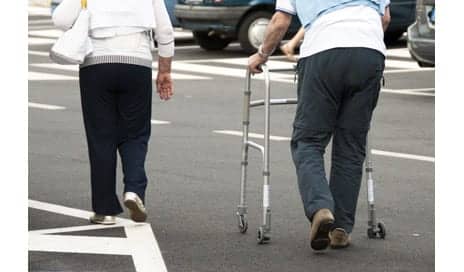Elderly people’s walking speed may be related to the amount of amyloid they have built up in their brains.
This could be so even if elderly people don’t yet have symptoms of Alzheimer’s disease, according to a media release from the American Academy of Neurology.
Natalia del Campo, PhD, of the Gerontopole and the Centre of Excellence in Neurodegeneration of Toulouse (University Hospital Toulouse) in France and her research team studied 128 people (average age: 76) who did not have Alzheimer’s but were considered at high risk for developing it because they had some concerns about their memory.
As part of the study, the participants had positron emission tomography (PET) scans of their brains to measure the amount of amyloid plaque in their brain. Among the participants, 48% had a level of amyloid often associated with Alzheimer’s disease, per the release.
The participants’ thinking and memory skills, and how well they could complete everyday tasks, were also tested. Among the test group, 46% demonstrated mild cognitive impairment.
Their walking speed was also measured using a standard test that times people on how fast they can walk about 13 feet at their usual pace. The average walking speed was 3.48 feet per second. All but two of the participants tested in the normal range of walking speed, according to the release.
The researchers found an association between slow walking speed and amyloid in several areas of the brain, including the putamen, a key region involved in motor function. The researchers compared how fast people walked both with and without taking into account the amount of amyloid and found that the amyloid level accounted for up to 9% of the difference in walking speed, the release explains.
The relationship between amyloid levels and walking speed did not change when researchers took into account age, education level, or amount of memory problems.
“It’s possible that having subtle walking disturbances in addition to memory concerns may signal Alzheimer’s disease, even before people show any clinical symptoms,” del Campo states in the release.
Del Campo notes in the release that the study looked only at a snapshot in time and does not prove that amyloid plaques cause the slowdown in walking speed; it shows the association. She also cautions that there are many other causes of slow walking in older adults.
The study was published recently in Neurology, the medical journal of the American Academy of Neurology.
[Source(s): American Academy of Neurology, Science Daily]





